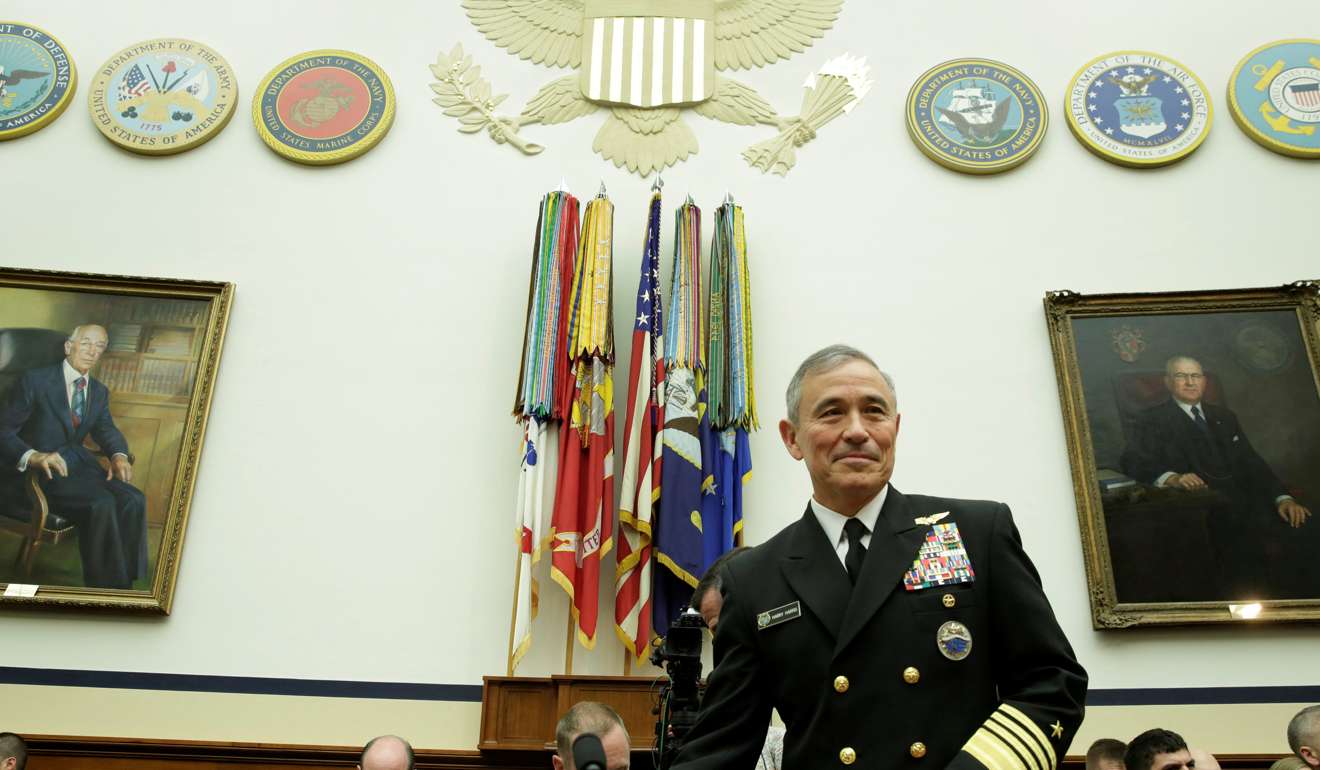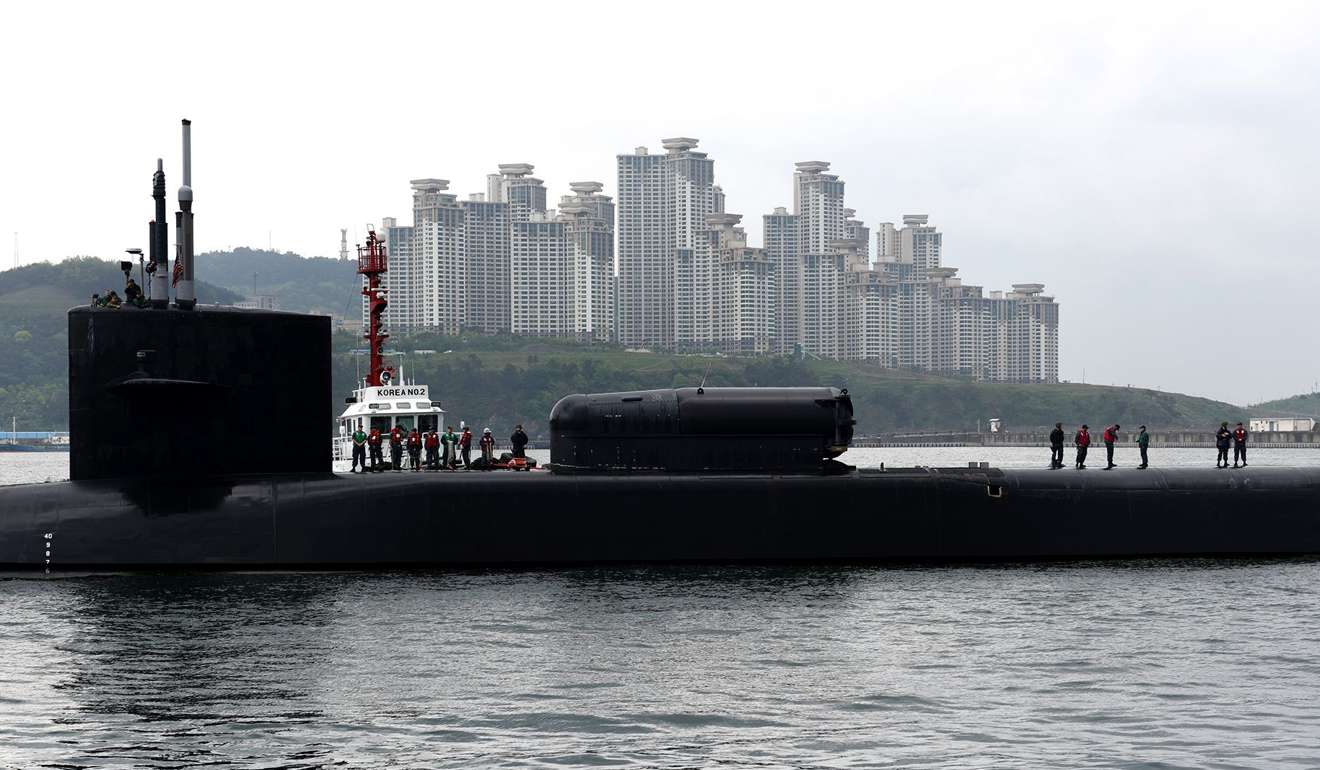
Trump team retreats from war talk with North Korea, will use economic and diplomatic pressure
US Pacific Chief wants North Korea’s Kim Jong-un to come ‘to his senses’
The Trump administration told lawmakers on Wednesday it will apply economic and diplomatic pressure on North Korea to dismantle its nuclear weapons programme, as an extraordinary White House briefing served to tamp down talk of military action against an unpredictable and increasingly dangerous US adversary.
President Donald Trump welcomed Republican and Democratic senators before his secretary of state, defence secretary, top general and national intelligence director conducted a classified briefing. The same team was also meeting with House members in the Capitol to outline the North’s escalating nuclear capabilities and US response options to what they called an “urgent national security threat.”
After weeks of unusually blunt military threats, the joint statement by the agency chiefs said Trump’s approach “aims to pressure North Korea into dismantling its nuclear, ballistic missile and proliferation programmes by tightening economic sanctions and pursuing diplomatic measures with our allies and regional partners.” It made no specific mention of military options, though it said the US would defend itself and friends.
A top US admiral said on Wednesday that America wants to bring North Korean leader Kim Jong-un to “his senses.”
Admiral Harry Harris, who heads the Pacific Command, welcomed recent efforts by Beijing to try to defuse soaring tensions between Pyongyang and Washington, and suggested a non-military solution remained the preferred outcome.
“In confronting the reckless North Korean regime, it’s critical that we’re guided by a strong sense of resolve, both privately and publicly, both diplomatically and militarily,” Harris said.
“All options are on the table. We want to bring Kim Jong-Un to his senses, not to his knees.”

The unprecedented meeting in a building adjacent to the White House reflected the increased American alarm over North Korea’s progress in developing a nuclear-tipped missile that could strike the US mainland. A flurry of military activity, by North Korea and the US and its partners on and around the divided Korean Peninsula, has added to the world’s sense of alert.
While tensions have increased since Trump took office, they’ve escalated dramatically in recent weeks as American and other intelligence agencies suggested the North was readying for a possible nuclear test. Although such an explosion hasn’t yet occurred, Trump has sent high-powered US military vessels and an aircraft carrier to the region in a show of force, while the North conducted large-scale, live-fire artillery drills, witnessed by national leader Kim Jong-un, earlier this week.
The White House briefing was led by Pentagon chief Jim Mattis, Secretary of State Rex Tillerson, Director of National Intelligence Dan Coats and General Joe Dunford, who is America’s top officer and chairman of the Joint Chiefs of Staff.
“This shows how serious this is,” Republican Senator Lindsey Graham said. “We should go to the home of the commander-in-chief. This lets the Congress know this is a very big deal.”
North Korea’s UN mission said Wednesday the nation would react to “a total war” with Washington by using nuclear weapons. It vowed victory in a “death-defying struggle against the US imperialists.”
Just hours before Harris spoke, US troops in South Korea began deploying a contentious anti-missile system in South Korea that has infuriated China.
The Terminal High Altitude Area Defence (THAAD) system is being set up on a former golf course in the southern county of Seongju, and its arrival was met by hundreds of protesters, some of whom clashed with police.

Harris said the THAAD system “will be operational in the coming days, and able to better defend South Korea against the growing North Korean threat”.
THAAD is designed to intercept and destroy short and medium-range ballistic missiles during their final phase of flight.
Harris said the Pentagon should weigh whether to install missile interceptors on Hawaii, which could be one of the first parts of the United States in range of an improved North Korean missile.
The United States already has missile interceptors in California and Alaska that can supposedly stop any ballistic threat coming over the Pacific, but Harris said these systems need strengthening.
“In other words, we need more interceptors,” Harris told the House Armed Services Committee.
The latest move comes as tension soars on the Korean peninsula following a series of missile launches by the North and warnings from the administration of US President Donald Trump that military action was an “option on the table.”

Still, Pentagon officials have stressed to Trump there are no easy options for military interventions in North Korea.
Washington has deployed an aircraft carrier strike group to the peninsula in a show of force, amid signs the North could be preparing for a sixth nuclear test.
Influential Chinese tabloid, the Global Times, run by the Communist Party’s official People’s Daily, in a harshly worded editorial denounced South Korea’s decision to move ahead with the THAAD deployment saying it undermined China’s effort to ease tensions on the peninsula.
“South Korea must pay the price for its arrogance. Seoul, by turning the peninsula into a powder keg together with the North, is playing with fire,” it said.
“But China will not lose its demeanour in the face of South Korea’s maliciousness ... Although the hasty deployment of THAAD disturbs the international sanctions on North Korea, China should not send favourable signals to Pyongyang out of its anger toward Seoul.”
Harris scoffed at Chinese objections, saying he believed it was “preposterous” that Beijing would try to punish South Korea over a system to defend itself, and suggested China should focus on trying to influence North Korea.
Additional reporting by Reuters

The deployment drew widespread derision after it emerged that instead of steaming toward the peninsula, the ships actually headed in the opposite direction for a few days to train with the Australian navy.
“That’s my fault on the confusion and I’ll take the hit for it,” Harris said.
“Where I failed was to communicate that adequately to the press and the media, so that is all on me.”
Harris said the USS Carl Vinson strike group is now in the Philippine Sea just east of Okinawa, “in striking range and power projection range of North Korea if called upon to do that.”
In Pyongyang’s latest display of its military capabilities, leader Kim Jong-Un oversaw the country’s largest-ever firing drill to mark the founding anniversary of its military, state-run media said Wednesday.
The drill saw more than 300 large-caliber self-propelled guns firing simultaneously and torpedo attacks by submarines, state-run KCNA said, demonstrating North Korea’s determination to pour a “merciless rain of fire on the reckless imperialist US and its dirty followers.”
Seoul held a large annual drill of its own Wednesday, involving some 100 artillery pieces, 90 armoured vehicles and 50 aircraft, as well as 2,000 South Korean and US troops, the defence ministry said.

.png?itok=arIb17P0)
